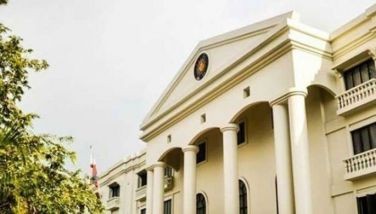Another Phl eagle dies
DAVAO CITY , Philippines – Till death do us part.
Female Philippine eagle Marikit died from a disease known as “aspergillosis†yesterday, just 10 days after her partner Arakan was killed when a branch fell on him inside an aviary at the Philippine Eagle Center in Barangay Malagos, Calinan district.
The two are considered important members of the breeding center’s gene pool for Philippine eagles.
Arakan and Marikit were breeding partners placed inside a P700,000 breeding aviary which was destroyed after a branch fell last Jan. 18 during heavy rains, according to Dennis Salvador, Philippine Eagle Foundation (PEF) chairman.
Aspergillosis is a lethal infection of the respiratory system caused by the fungus Aspergillus. It commonly affects wild birds in captivity.
The non-profit PEF runs the Malagos center now housing only 34 captive-bred giant raptors after the deaths of Arakan and Marikit.
The Malagos Center has so far produced 25 eagles through its conservative breeding program since successfully giving birth to Philippine eagles Pag-asa and Pagkakaisa in 1992.
Salvador told The STAR the freak accident that caused Arakan’s death could have stressed Marikit to the point that her aspergillosis flared up.
Efforts to save Marikit through forced feeding and medical means failed to help her recover, he added.
Marikit was found in Mt. Kan-apo in Surigao in 1995.
Arakan was one of the stricken giant raptors rescued in the wild and turned over to the PEF in 1999.
Personnel at the Malagos center discovered Arakan with its right tarsus or claw still holding on to its perch, indicating that he must have died upon impact.
Post-mortem examination showed bruises on the bird’s head and upper torso.
Eagles reportedly cannot see at night, which could have been the reason why the branch fell directly on Arakan, causing his death.
Arakan died of internal hemorrhage as evidenced by the blood clot around its nares or nostrils.
Despite the nature of death, there are no signs of fracture on his bones, head, neck, shoulders, rib cage, spine and legs.
Considered the national bird, the Philippine eagle now number less than 1,000, including those that were sighted in the wild, particularly in the remaining forested areas of Mindanao, Samar and parts of Northern Luzon.
The species of the Philippine eagle is on the brink of extinction.
Numerous large trees are planted inside the Malagos center because the conservation group is “trying to simulate the natural environment of the eagles.â€
The Philippine eagle is one of the largest birds of prey in the world and the most critically endangered of all the world’s raptors.
Famed for its elongated nape feathers that form into a shaggy crest, the Philippine eagle is found only on four of the country’s largest islands, mostly in Mindanao.
They grow to a meter (3.3 feet) with a two-meter wingspan.
Since 1997, the Marco Polo Hotel Davao has adopted eagles through the Malagos center’s adopt-an-eagle program.
Marco Polo Hotel Davao is a corporate partner of the Philippine Eagle Center, whose mission is to protect the bird and its rainforest, and to increase eagle population in the world through natural and artificial breeding programs.
The hotel consistently supports the Philippine Eagle Center and its activities as part of its support for biodiversity and environmental conservation work.
- Latest
- Trending
































